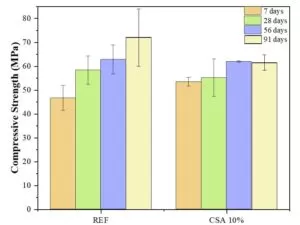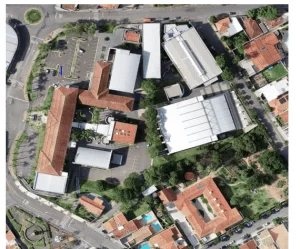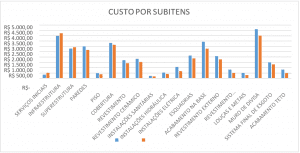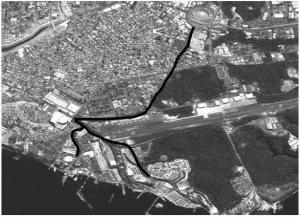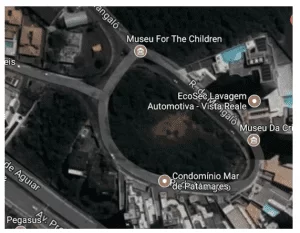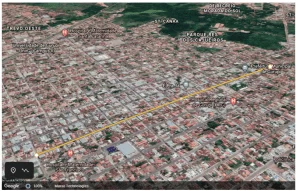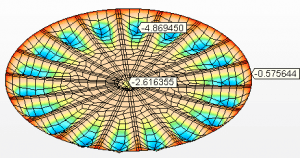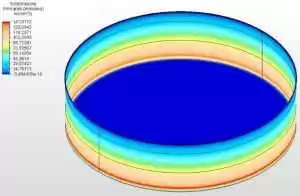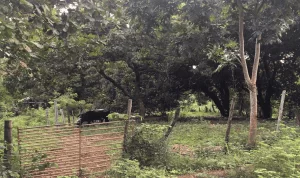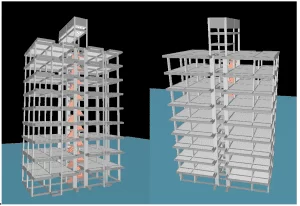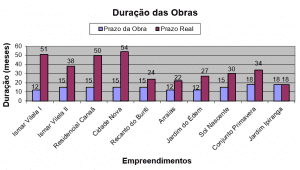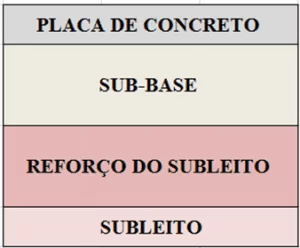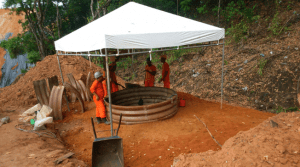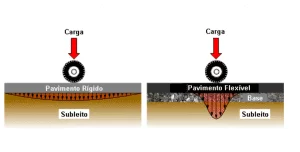CASTRO, Hemyson Amaral [1]
MONTEIRO, Patrick Olbera [2]
RAMOS, Rogério Gomes [3]
SOUZA, Jairo Andrade [4]
SANTOS, Anderson Alves [5]
CASTRO, Hemyson Amaral; et. Al, Inferences regarding the application of asphalt pavement on the highway BA-120, stretch of the BR-415, Barro Preto-BA. Multidisciplinary Core scientific journal of knowledge. Year 1. Vol. 9. pp. 23-37, September 2016. ISSN. 2448-0959
Summary: road transport carried out on roads, highways and streets moves goods, raw materials, animals, people and many others. One of the most routine problems faced by individuals who travel the roads of Brazil consists in impossibility of traffic, increase in travel time and consequent discomfort of users due to the holes, wear, cracks, sags, offsets etc, which are usually a result of a pavement that is not recovered following the appropriate standards and technical requirements. Thus, starting from questioning about ' how the revitalization and paving the highway BA 120 in the excerpt from the junction of the municipality of 415 BR black pottery? The objective of the review of the implementation of the work of paving and revitalization held on the highway above. To this end, establishing itself as methodology literature review pegged to the case study of accessing documents, photographic records, spreadsheets, among others. It was found that the cost/benefit of the use of Asphalt Concrete coating machined hot (CBUQ) was the culmination of long-term savings, since the cost of rework inflates the budget, as seen in the literature, and as such voted best type of flooring for use in this case. The highway was delivered within agreed and the intense supervision can be considered as a factor that contributed to this.
Key words: Asphalt Concrete Hot machined; Revitalization; Pavement; Road System.
INTRODUCTION
The latest study released by the National Confederation of transport (CNT, 2015) about the road conditions in the State of Bahia, in 2015, pointed out that 44.5% of the evaluated (8000 km) were classified as good or great. Bahia, one of the largest States of the Federation, has 15,922 kilometers of paved roads (CNT, 2015)-mostly with two-way lanes of only two tracks, and this modal is, by far, the main and most important when, for example, the movement of cargo and passengers and, consequently, generation of foreign currency to the municipalities, State and the Union.
The option on the roads at the expense of other modes, such as rail or water, dating back to the 19th century, when, in 1861, was inaugurated the road industry Union. She called the States of Rio de Janeiro and Minas Gerais, covering 90 miles in its entirety (96 km in Rio de Janeiro and 48 km in Minas Gerais), which allowed the economic progress of these two regions, through facilitated flow of goods (DNIT, 2015, p. 8).
Thus, the choice for the road is not modal privilege. According to data from the Ministry of planning (BRAZIL, 2012) the multiannual plan – more Brazil 2012/2015 road transport mode corresponds to more than 58% of the national movement of loads and 48% of the interstate transportation of passengers in the country.
The vitality of this modal contrasts, however, with the investments made in the sector – the mesh and maintenance of this enlargement, as well as contrasts also with the concern to apply an asphalt paving of quality, to ensure the good condition of the road and its durability, and can mean a significant reduction in maintenance and reconstruction of the excerpts. "The road is the inducer of modal development and national integration. More than 60% of Brazilian products seep through this modal ", said the Executive Director of the CNT, Bruno Batista, in release disclosed to the press on the 18th Edition of the CNT Highway Research (2014).
South of Bahia there are thousands of kilometers of paved roads, as the BR-101, 415, and BA-001. This road connects tourist destinations as Ilhéus, Porto Seguro, Itacaré, grain transportation routes and almonds to the harbor of Ilhéus, among others. In this region, there are few studies about the road conditions. One of the non-existent analysis is related to the BA 120, in the stretch from the junction of the municipality of 415 BR black pottery.
By the year 2013, that stretch followed without asphalt, forcing the runoff of agricultural production in that region and the displacement of passengers being done via dirt road, subject to climatic variations, like the rain, that if in volume carried in intrafegabilidade too much from that junction.
The previous affirmations lead to conclude how important became the road modal in Brazil and in southern Bahia. From this, it becomes relevant to ensure the viability of traffic through a constant process of improvement of the techniques of application of asphalt material and, not least, maintenance of the road network.
The improvement of techniques and material used in paving roads contributes to the durability of the saw, in order to extend the period of its use without requiring maintenance and reforms on the asphalt.
Therefore, this present article search, objectively and with easy language, analyze how the application of asphalt BA 120, in the excerpt from the junction with BR 415, which gives access to the municipality of black pottery and the rural towns of the region. The follow-up to that work, which for years was a yearning of the nearby communities, was made by one of the authors of this work, during his internship in the course of Civil Engineering, which allowed him to observe closely the whole process and to share with others their experience, and the authors experience in engineering area added to the preparation of this article.
THEORETICAL FRAMEWORK
Before we go to report and analyze as the paving of the passage in question in this article, it is necessary to understand what are the procedures for the application of this type of material. Are taken into consideration the planning, design and construction, itself (M, 2002).
In the planning phase, the main function of the highway, which can be commercial, tourism or the military purpose for which it is intended the highway determines its path, strength and materials to be used in the project. For example, if the highway is intended for commercial use, your recomendavelmente is short and should allow quick and easy access to the economic centers in the region to be integrated (frames, 2004). To do this, calculate the volume, speed and traffic density, types and weights of vehicles that will make the traffic on the highway, the largest volume of traffic, the possibility of accidents and traffic jams and the costs of construction, operation and maintenance (M, 2002).
The project consists primarily of drawings of plant road, cross and longitudinal profile and its structures (such as bridges); the scale of the works and the preparation of the budget.
The drafting of the project comprises the following activities: traffic Studies, geotechnical, hydrological, geological and topographical, besides projects: geometric, Earthwork, paving, drainage, artwork, special works of art, economic viability, expropriation, intersections, and access returns, signaling and security features. Nevertheless must have also the construction budget and implementation plan, in addition to environmental impact report.
For BALDO (2007), well designed, a road must not present, for example, hairpin turns and frequent, grey very broken and with strong or poor visibility declivities.
The curves must have the largest possible RADIUS; The maximum ramp should only be used in special cases and with the smallest possible extent; The visibility should be ensured throughout the track, particularly at intersections and in the horizontal and vertical curves; should be minimized or avoided the rock cuts; should be compensated for the cuts and landfills; transport distances should be the smallest possible (M, 2002, p. 34)
The construction is the stage when the other two are implemented. Is it that the planning and design will be tested and put into practice. The previous phases, if not made effectively, result in a faulty tarmac that, rather than being a synonym for solution, will result in bad road and required lengthy and costly maintenance. This corrective work can be spared if the previous steps are well executed. Otherwise, it will take such disorders as ban on track to fix, for example.
To understand the process of building a road, you have to pay attention to the following steps: the earthwork, drainage, paving, flagging, environment and safety, quality management. The earthwork consists basically in the removal of Earth and stones of a place where there's more to another where there is less, in order to leave the flat terrain (CASTRO, 2003).
1.1 Earthwork and paving
Earthworks is the excavation engineering technique and handling of soils and rocks, refers to the set of operations aimed at the removal of excess Earth for locations where there is a shortage. The earthwork service comprises basically four steps: excavation; loading; transport; spreading.
The paving can be flexible or rigid. The flexible consists of several layers that are designed to work together, each of them must absorb part of the requests imposed (weight of the vehicles, for example) and give the rest to the layers located at lower levels. According to Balbo (2007) paving layers are:
- Subleito: is the innermost layer of the pavement, and is considered the Foundation of the pavement, i.e. is the natural material of the region where you want to insert the floor. • Strengthening of the subleito: is the layer with variable thickness, enhances the ability of subleito load support, with technical characteristic lower than the upper layer (subgrade), and higher than the subleito material. Being used, if the load bearing capacity of the subleito material is very low. • Sub-base: it's the layer that has the same basic function is performed on the subleito or the strengthening of subleito.
- Base: paving layer is designed to receive the vertical traffic efforts and distribute the underlying layers. • Finish: is the layer that receives vertical and horizontal loads from the traffic, passing the underlying layers. In addition to improving the bearing surface on the conditions of comfort and safety, and resist wear (BALBO, 2007, p. 128).
The big difference between a flexible pavement and a drive if it's all the process of absorption of impacts. Contrary to what you saw earlier, the drive basically consists of a concrete slab that absorbs all the request, distributing it in a large area. In this model, the subleito, the load is sufficiently damped.
It is common to say that the advantage of rigid pavements in relation to their structural characteristics flexible consists of, if well designed and built, have longer life and greater spacing between maintenance. In other words, means that rigid asfaltamentos well executed represent long-term economy and is synonymous with the road in good condition.
Flexible or rigid, according to NBR 7207 (ABNT 1982), the concrete must have the ability to:
Resist and distribute the subleito vertical efforts produced by traffic; 2). Improve the rolling conditions as for comfort and safety; 3). Resist horizontal efforts that work, making it more durable the bearing surface (ABNT, 1982).
1.2 Drainage
The drainage process consists in gathering and relocation of all the water that originates or drips falling on the surface or that is able to cross the road platform and may compromise the security of geotechnical, the life of the structure, or even the safety of its users.
1.3 Signaling
At the end of the construction of a highway, demarcation and signs of the same are carried out with the purpose of guiding motorists about the appropriate speed limits for each excerpt, curves, points of interest, at entrances and exits and at the distances of every location served by highway.
1.4 environment and quality management
All sized constructs always entail environmental modifications can impact them negatively, too. In particular, the construction of highways generate impacts on the environment, among them we can mention: deforestation, interference or loss of local biodiversity, soil degradation, etc.
The adoption of measures of control, environmental monitoring and management to dramatically minimize the impacts caused by construction projects, such as highways.
In this sense, the environmental management of Highways manages the environment with actions and activities that are intentionally applied to avoid or prevent undesirable manifestations attenuation of controllable as well as environmental impacts, monitoring activities in order to accompany the transformations generated (FOGLIATTI, FILIPPO and TH, 2004).
According to Tomaz (2001 apud, CERUTTI, 2010, p. 17) the quality can be regarded as the set of goods or services, that generate the highest level of customer satisfaction, as lower energy consumption, zeal for the environment and without forgetting to ensure safety and comfort to those who produced.
The quality problems of asphalt paving works are related to the project-phase encompassing all layers of the pavement (subleito, sub-base, base, and drainage of their coating layers), the implementation phase of all layers and the quality of materials used, particularly those of bituminous concrete, as well as the product of his mixing (CBUQ) (SON , DALLAS and MORAIS, 2008, p. 15).
2. METHODOLOGY
The study area is owned by the municipality of black pottery, which has population of around 2015 to 6,492 people in a territory of 128.381 km ², located south of Bahia (IBGE, 2015).
The bibliographical research available resources (books, scientific articles, virtual media, etc.) and, finally, case study, this analysis is based, following what provides, Gil (2002) argues that the bibliographic survey has the characteristic to describe ideas and studies of authors surveyed. The case study, according to Yin (2001), consists of a research on empirical form, in your real life context.
The type of sampling used is that of accessibility or for convenience. He was selected an element to which they had access, admitting this, in its entirety, could represent the universe and be applied in addition to the local reality. In order to avoid losses in the observation, it was made in real time.
3. RESULTS AND DISCUSSIONS
As seen earlier, the faults generated by passage of time on Brazil's highways tend to represent damage to various sectors of society. Thus, it is necessary a constant effort for rework or building (whereas a significant percentage of the roads that have not been paved). Studies that point to the way they develop these rework and/or buildings are indispensable to observe as if carrying out these activities.
In this sense, have the greatest detail possible, analyzed aspects such as records, reports, photos, videos, and personal notes, in order to ascertain how the processing and paving the highway.
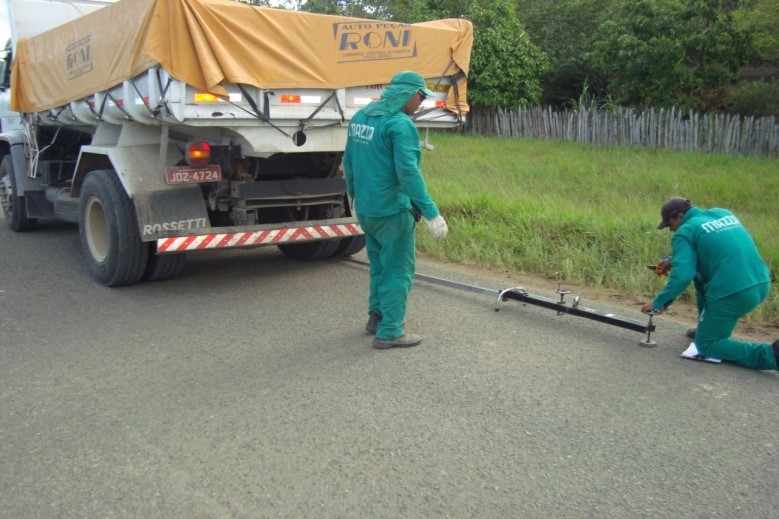
The service execution contract, under registration number EC-017 CT 080/13, governed the proceedings 11,460/12, whose contract value corresponded to R$ 10,705,300.20, was put out to tender by the DERBA contemplating services of restoration and flooring in CBUQ "in excerpt from operational responsibility of maintenance of Residence Itabuna, which corresponded to the stretch of BA-120 (junction of BR-415, Barro Preto) was detained by the company Construterra – construction and Earthworks Ltda. , which is responsible for the execution of the work.
For preparation of a project on building and/or reconstruction, the place where the highway will be built, as the work in question, be thoroughly evaluated. These reviews provide data for analysis of the condition of the surface of the pave[6]ment and its structure, being essential for defining the appropriate restoration alternatives.
For example, cracked areas and the severity of fatigue cracking, permanent deformations and the longitudinal irregularity, are the main defects considered in functional assessment. Already the surface deflection under load or deformation shallow basin consist of the essential parameters of structural assessment (BERNUCCI et al., 2006).
In the case studied, it was found that, for the most part, the excerpts presented only remnants of pavement. Elsewhere, there was asphalt, however, in pretty precarious situation, with cracks that inviabilizavam your full use, being so necessary to the complete study of the condition of the existing pavement.
After all the analyses, samples collected and forwarded to laboratory and by following the regulations in force, the results of tests on soils, aggregates and bituminous binders has reinforced the need for the use of a coating tougher, being chosen the CBUQ. This was due to their strength and long term durability.
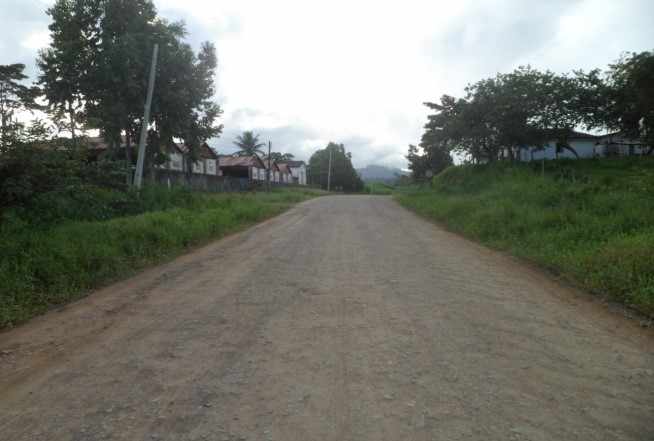
e. Source: Final report – service "As Built" (BAHIA, 2014).
3.1 Earthwork
This step consists of a clean side of the track, enlargement and recess[7]. The removed materials were transported to places of "send-off" provided for in the project. The recess of the cuts was necessary for drainage improvement. That way, you can remove the Earth where is in excess to those where missing.
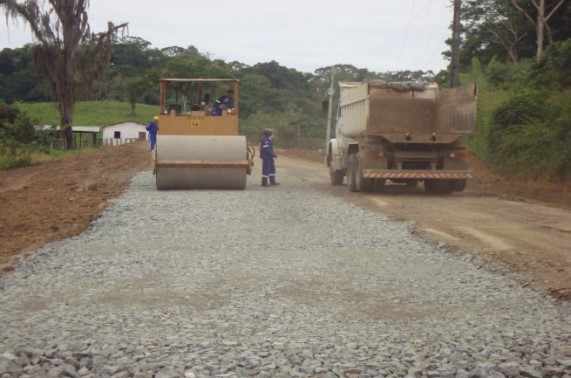
3.2 Paving
The paving is based on steps, namely: rerunning the subleito highway with scarification, incorporation of the existing coating without mixture, the subfloor was stabilized without mixture. The base was performed with Macadam of dry (20 cm) and graded gravel (0, 15 cm) in the plant. After running base layer was made with asphalt undercoating diluted CM -30, and then lead paint.
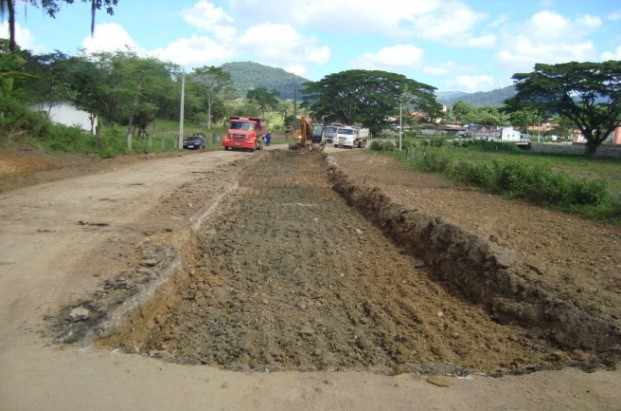
: personal Collection of the author.
Finally, the asphalt coating in CBUQ. The CBUQ offers superior durability, equivalent to 10 years, when compared to conventional asphalt (three years); has effectiveness high and ideal at low temperatures, tolerating variations below zero or tropical temperatures; has friction coefficient higher than conventional asphalt; the bearing layer thickness can be reduced by keeping the quality, since the service life is twice the conventional; the cost of the BMP ligand is about 20% to 30% more expensive in cubic meter, but if you look at their longevity the initial cost makes it cheaper (MOREIRA, 1994).
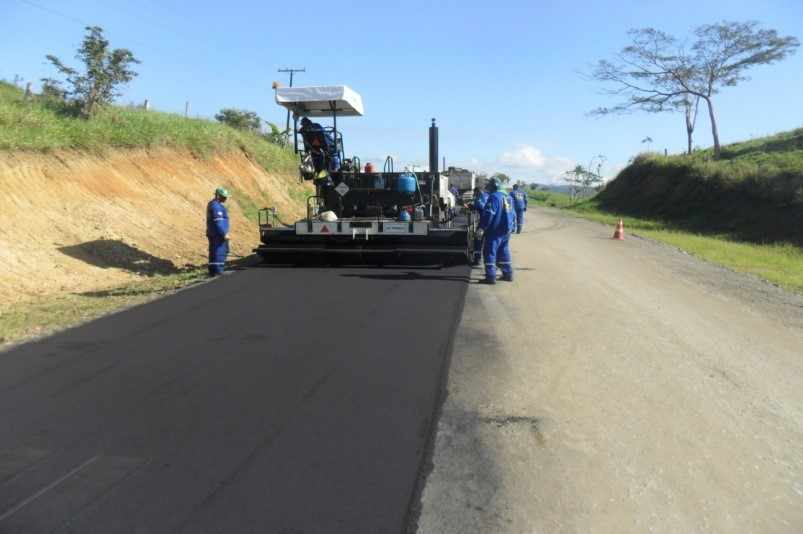
Raw materials and quality workmanship, coupled to a higher grade of organization are important factors for earthwork and paving steps are performed safely and comply with the standards recommended by the DERBA, including the placement of the construction site as well as industrial facilities.
3.3 Drainage
The recovery and implementation of devices, such as tubular culverts, drains, among others, in addition to the implementation of those that were necessary, seeking the maximum operation efficiency of the highway. This drainage work is important, because it eliminates the water that reaches the road body (independent of shape/origin), capturing it and leading it to places where they do not endanger the safety of users of the highway, nor affect the durability of the via (DNIT, 2006).
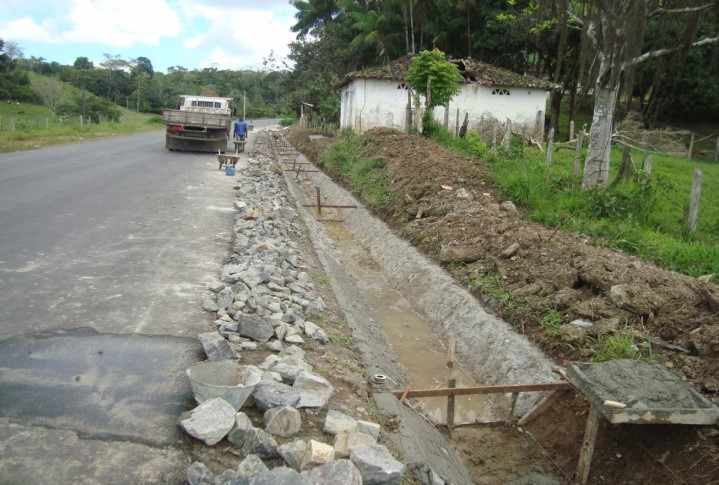
Source: Final report – service "As Built" (BAHIA, 2014) drain
The drains are devices intended for the permissibility of the free passage of water. And, as such, are designed depending on the need of the place where they are deployed. In the case under study, we used the cellular model, designated as such by its rectangular cross section.
3.4 signaling and Guideline Speed
Resinada acrylic paints were used with a thickness of 0, 6 mm for painting and the horizontal signaling symbols. Vertical signaling was carried out through the deployment of fully-reflective plates, fixed on wooden posts. Implemented even the use of reflective tachões reflective studs bi-directional and bidirectional.
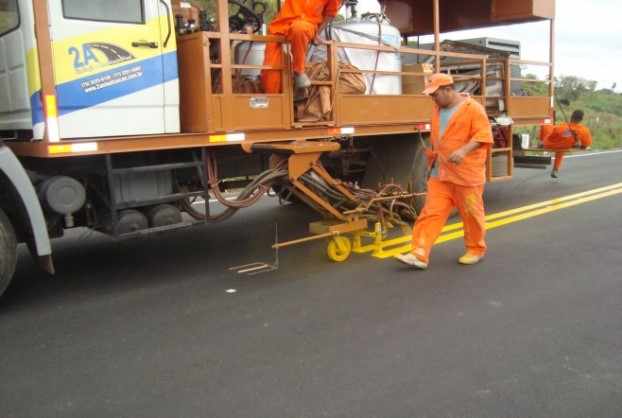
All this signaling activity according to DNIT (2010) "should win the attention and trust of the user, allowing you to still a suitable reaction time" and with the purpose of guiding and caution to minimize the risk of accidents. In this regard, we note that was obtained by the executing company success, since no non-conformities were reported.
With respect to Speed, Guideline for the BA 120 in BR black clay to 415 V = 60, 00 km per hour. The domain range corresponds to 40 meters.
3.5 Quality Management
The actions consistent with quality management involved from the definition of executive procedures and methods, determinants of satisfactory evolution of activities in the context of the work of upgrading and paving of the road stretch, until the execution of the technical control of the enterprise. Reaching the objectives proposed in the project effectively and without wear and unnecessary costs. This whole process culminated in the success of the project with the delivery of a restored quality highway for the benefit and use of the company.
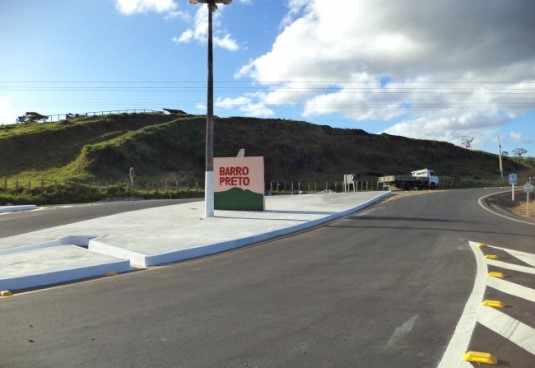
FINAL CONSIDERATIONS
The work of application of asphalt in BA 120, in the excerpt from the junction with BR 415, which gives access to the municipality of black pottery and the rural towns of the region, was executed on schedule laid down. This can be seen when we consider the period between the signature of the contract (in 3/27/2013), the release of the service order (dated 4/3/2013) and the delivery of the work, on November 10.
The work took place without delays, a fact that can be attributed, among other factors, the level of organization and planning for implementation of the service, even considering the fact of southern Bahia be known for weather precipitation which result in routine rains and could result in paralysis or decrease the pace of the work.
The choice on the part of the company responsible for the service by using the CBUQ coating took into account the cost/benefit of this material. In the long run, although cost more than other types, the CBUQ requires less rework, due to its durability and resistance to the use of asphalt and the actions caused by the Sun, rain and other agents.
Another relevant factor was found in the description of the documents visited, when it noted the existence of a positive balance of contract worth 402.60 R$ (402 real and 60 cents). This means that even using more expensive material, but with better cost/benefit ratio, the organization with which it worked allowed be positive balance, suggesting, too, the absence of overpricing.
Another factor that reduces the chance of overpricing was the absence of distortion of the physical-financial schedule and compliance without disabilities in carrying no result in decreased quality, shelf life or safety. Logically, the purpose of this analysis was not checking under economic and administrative the existence or not of overpricing.
The use of mechanisms such as flags, in case of deviations and/or outages, traffic signs indicating, the underpinning, cones and other signalling and safety devices, although it took a routine procedure, made the workplace safer. The absence of negative notifications about the work in this project is indicative of good execution of the activities, as required by the competent bodies.
Finally, it is worth registering that are determining factors for a good condition of roads: planning, correct choice of material for paving and correct execution. A road well planned and implemented taking into account the best long-term options tend to be less costly to society, who, in fact, Ark with these works.
REFERENCES
BALBO, j. t. asphalt pavement materials, projects, and restoration. São Paulo: text Workshop, 2007.
BERNUCCI, L. B.; MOTTA, L. M. G.; CHANG, j. p. and Smith, j. b. asphalt pavement – basic training for engineers, Rio de Janeiro, PETROBRAS: ADEBA, 2006.
Brazil. National Confederation of transport-CNT. CNT research of highways, 19th ed. Brasilia: DF, 2015.
Brazil. Ministry of planning. "Multi-annual Plan – more Brazil 2012/2015". Brasilia: DF, 2012.
DNIT. National Department of transport infrastructure. History of the DNIT. Brasilia: DF, 2015.
FOGLIATTI, M.C.; FILIPPO, s. and GEORGE, b. Environmental Impact Assessment: application to transport systems. Rio de Janeiro: 124 P, 2004.
GIL, a. c., how to prepare research projects, 4th Edition, São Paulo, Editora, 2002.
MACEDO, and l. notions of Topography For Road Projects. General Topography course, Chapter 2, 2002.
MOREIRA, DC interdependence of the physical characteristics of bituminous mixtures C.B.U.Q. type (Lecture), 1994. Available in:<http://www.proasfalto.com.br/pdf/Asfalto_Capitulo_04_Mar2010.></http://www.proasfalto.com.br/pdf/Asfalto_Capitulo_04_Mar2010.>PDF >. Access in: 7 June 2016.
FRAMES, D. S.. Apostila of Forest road network. (Class notes) Regional University of Blumenau-FURB, Blumenau: SC, 2004.
YIN, R.K. case study: planning and methods. 2nd ed. New York: Bookman, 2001.
[1] -Civil Engineer, graduate degree in road engineering of the school of engineering and surveying. Contact: [email protected]
[2] Expert, civil Engineer, FTC, graduation in road engineering of the school of engineering and surveying, contact: [email protected]
[3] Graduate civil engineer, FTC, graduation in road engineering of the school of engineering and surveying, contact: [email protected]
[4] Civil engineer, FTC, graduation in road engineering of the school of engineering and surveying, [email protected]
[5] Advisor: Anderson Alves Santos, PhD in Environment
[6] The use of Benkelman beam is aimed at the understanding of the structural capacity of the pavement through the determination of pavement deflections.
[7] ' Cuts are moving Earth or rock whose execution requires excavating the material that makes up the natural terrain within the limits of the projected sections ' (source: State of Company housing and public works, public works. Available at: <https: www.google.com.br/webhp?sourceid="chrome-instant&ion=1&espv=2&ie=UTF-8#">).</https:>

